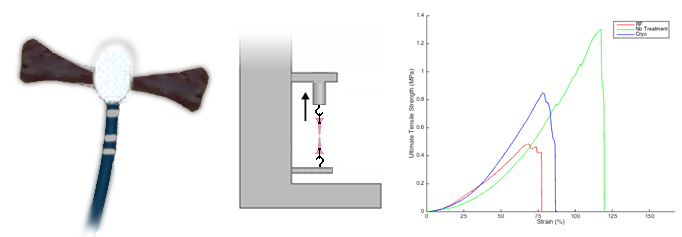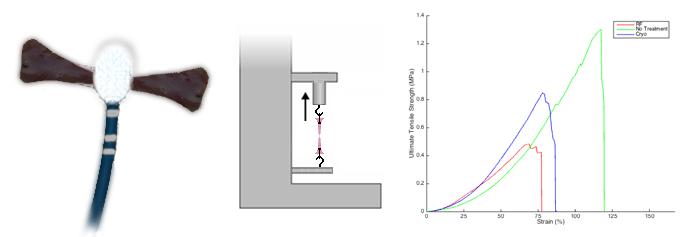
Changes in cardiac tissue properties following the application of various ablation modalities may lead to the development of an array of associated complications. The application of either radiofrequency (RF) or cryothermal ablations will alter the biomechanical properties of various cardiac tissues in a differential manner; in some cases this may be attributable to increased incidences of cardiac tamponade, pulmonary vein stenosis, and/or atrial-esophageal fistula. Thus, a greater understanding of the underlying changes in tissue properties induced by ablative therapies will ultimately promote safer and more efficacious procedures. The effects of applied RF or cryothermal energies on the biomechanical properties of the pulmonary vein, left atrial, or right atrial samples (n=369) were examined from fresh excised porcine (n=35) and donated human tissue (n=11). Radiofrequency ablations were found to reduce the tensile strength of the porcine cardiac specimens (p<0.05), and a similar trend was noted for human samples. Cryoablations did not have a significant impact on the tissue properties compared to the untreated tissue specimens. Locational and species differences were also observed in this experimental paradigm (p<0.001). Incorporating these findings into cardiac device design and computational modeling should aid to reduce the risks of complications associated with tissue property changes resulting from cardiac ablative procedures.

